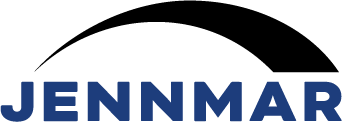xCell Cyclops: a new technology for an efficient way of monitoring convergence in underground mines

|
Authors: Vallati, O; Farrington, M; Young, P; Weaver, S |
DOI https://doi.org/10.36487/ACG_repo/2325_01
Cite As:
Vallati, O, Farrington, M, Young, P & Weaver, S 2023, 'xCell Cyclops: a new technology for an efficient way of monitoring convergence in underground mines', in J Wesseloo (ed.), Ground Support 2023: Proceedings of the 10th International Conference on Ground Support in Mining, Australian Centre for Geomechanics, Perth, pp. 41-50, https://doi.org/10.36487/ACG_repo/2325_01
Abstract:
Mines are looking for efficient ways to improve their day-by-day operations while enhancing safety. When it comes to instrumentation and monitoring, the solution should be simple to use, easily installed and economical. Good monitoring practices should minimise personnel effort by promoting a more intelligent use of technology. In this context, this paper presents the xCell Cyclops that Sandvik has recently developed. With the xCell Cyclops monitoring system, it is possible to get a real-time flow of convergence measurement data delivered straight into the cloud-based application. The xCell Cyclops is directly mounted to MD, MDX and Kinloc bolts or through use of low-profile adaptors any standard threaded bolt. Once installed, the xCell Cyclops continuously measures the distance from one side of the excavation to the other using precision laser technology. With wi-fi connectivity, the data is instantly available in the web and iOS interface. If wi-fi is not available, the xCell Professor, a Bluetooth low energy gateway, is mounted on already existing vehicles for drive-by data collection. When compared to current measuring methods, the xCell Cyclops allows for a deeper understanding of rock mass behaviour by providing timely and continuous readings collected with minimum effort by site personnel. This technology leads to a safer, more sustainable work environment, can assist in ground support design, and improve the cost efficiency of ground support by optimising ground support utilisation.
Keywords: monitoring, convergence, IoT, digitalisation, safety, MDX, xCell Cyclops
References:
Jones, E & Beck, D 2017, ‘The use of 3D laser scanning for deformation monitoring in underground mines’, Proceedings of the 13th AusIMM Underground Operators’ Conference 2017, The Australasian Institute of Mining and Metallurgy, Carlton.
Lynch, BK, Marr, J, Marshall, JA & Greenspan, M 2017, ‘Mobile LiDAR-based convergence detection in underground tunnel environments’,
Potvin, Y, Wesseloo, J, Mbenza, J, Cumming-Potvin, D, Sewnun, D, Egan, A H, ... Morissette, P 2021, Ground Support Systems Optimisation Phase 2 (GSSO 2), Minerals Research Institute of Western Australia, Perth.
l/490131/2021-03-24/8mg7w6
Stiehl, A, Darlington, B, Rataj, M & Young, P 2018, ‘Application of the MD bolt in the Fosterville gold mine’, Rock Dynamics and Applications 3, CRC Press, Boca Raton.
Vallati, O, Roach, W & Weaver, S 2020, ‘Ground support and strata monitoring: what is needed?’, in J Wesseloo (ed.), UMT 2020: Proceedings of the Second International Conference on Underground Mining Technology, Australian Centre for Geomechanics, Perth, pp. 285–296,
© Copyright 2025, Australian Centre for Geomechanics (ACG), The University of Western Australia. All rights reserved.
View copyright/legal information
Please direct any queries or error reports to repository-acg@uwa.edu.au
View copyright/legal information
Please direct any queries or error reports to repository-acg@uwa.edu.au
